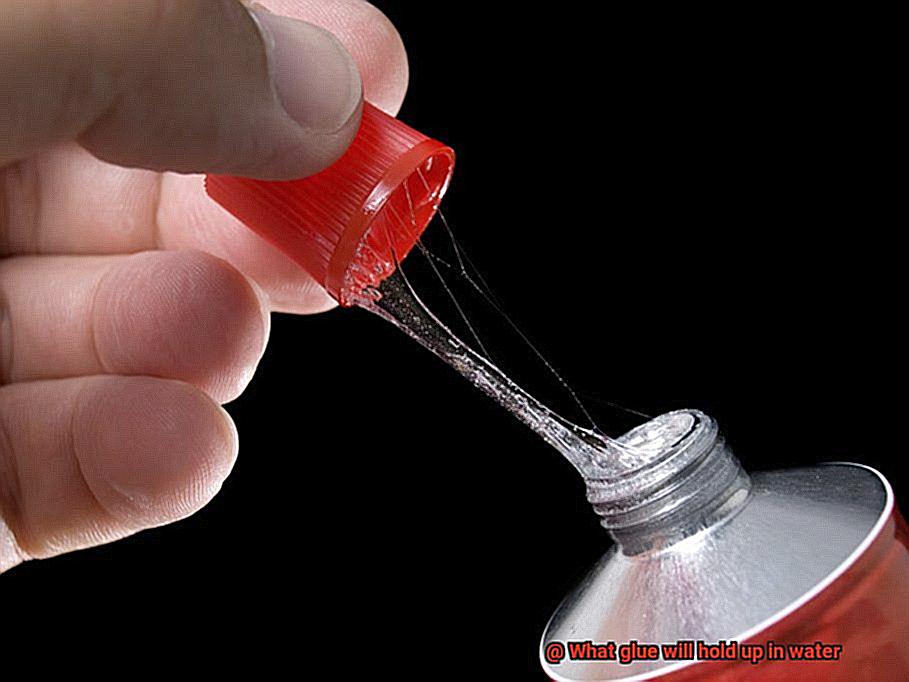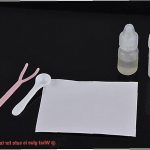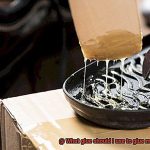Do you find yourself frustrated with your arts and crafts projects falling apart in water? Are you working on a DIY aquarium or outdoor project and need a glue that can withstand water exposure? Fear not, my friend. There are several options available for glue that will hold up in water.
But before we dive into the different types of waterproof glue, let’s take a moment to understand why some glues fail in water. Traditional water-based glues like PVA or white glue rely on the evaporation of water to create a bond. Unfortunately, this means they break down when exposed to water, losing their adhesive properties.
Now, onto the good stuff – what are our options for waterproof glue that won’t break down in water? Epoxy and cyanoacrylate (super glue) are two popular choices for their ability to resist water and maintain their bonding strength. However, it’s important to note that not all epoxy or cyanoacrylate glues are created equal. Some may be better suited for certain applications than others.
In this blog post, we’ll explore the different types of glue that can hold up in water, their strengths and weaknesses, and provide tips for choosing the right glue for your project. So sit back, relax with a cup of tea (or coffee), and let’s get ready to tackle those watery projects.
What is Glue?
Contents
- 1 What is Glue?
- 2 Types of Glue
- 3 Water-Resistant Glues
- 4 Epoxy
- 5 Polyurethane
- 6 Traditional Waterproof Glues
- 7 Factors Affecting the Effectiveness of Glue in Wet Conditions
- 8 Proper Surface Preparation and Application Techniques for Water-Resistant Glues
- 9 Advantages and Disadvantages of Using Water-Resistant Glues
- 10 Conclusion
Glue is a remarkable substance that has been used for centuries to bind and join two surfaces together. It is an adhesive compound that can be made from a variety of materials, including natural ingredients like animal hides or synthetic chemicals.
Regardless of its composition, glue’s primary function is to create a strong and durable bond between two surfaces.
There are many different types of glue available on the market, each with its own specific properties and uses. Some common examples include super glue, white glue, hot glue, epoxy glue, and contact cement. These adhesives come in various forms like liquid, gel, or spray and can be applied using different methods like brushes or syringes.
The strength and durability of the bond created by glue depend on several factors like the materials being bonded together, the type of glue used, and the environmental conditions it will be exposed to. For instance, if you’re working on a project that requires a strong bond in wet or humid conditions, you’ll need a water-resistant adhesive that won’t break down or weaken when exposed to moisture.
When it comes to water-resistant glues, epoxy and polyurethane are two popular options that provide excellent results. Epoxy is known for its remarkable ability to hold up in saltwater environments and is widely used in boat building and repair. Polyurethane is another option that creates a strong chemical bond and is resistant to water, making it perfect for both indoor and outdoor applications.
For those who prefer traditional glue, there are also waterproof versions of white and yellow glue available that can hold up well when exposed to moisture. However, it’s crucial to note that even with these water-resistant options, there may still be limitations on their effectiveness based on factors like exposure time and surface preparation techniques.
Types of Glue
If so, there are several options available, each with its own unique properties and strengths. Let’s explore the different types of glue that are suitable for use in wet conditions.
Epoxy Glue:
Epoxy glue is a two-part adhesive that creates a chemical reaction when mixed together, forming a strong bond that can withstand water exposure and other harsh conditions. This type of glue is popular in marine applications, such as boat repair, because it can hold up in saltwater environments. Epoxy glue can be used on a variety of surfaces, including metal, glass, and plastic.
Polyurethane Glue:
Polyurethane glue forms a strong, flexible bond that can withstand water and other harsh conditions. It reacts with moisture in the air and on the surface of the materials being bonded, making it ideal for outdoor projects such as sealing wooden decks or repairing outdoor furniture. Polyurethane glue can be used on wood, metal, and plastic surfaces.
Silicone Adhesive:
Silicone adhesive is a versatile option that is waterproof and heat resistant, making it ideal for use in hot and humid environments. It can be used on a variety of surfaces, including glass, metal, and plastic. Silicone adhesive is commonly used for outdoor projects such as sealing gutters or repairing roofing tiles.
Super Glue:
Superglue is a fast-drying adhesive that forms a strong bond in seconds. While not specifically designed for use in water, it can still hold up in wet conditions if applied correctly. Superglue is great for small repairs or projects and can be used on metal, plastic, and ceramic surfaces.
Waterproof PVA Glue:
PVA glue, also known as white glue or school glue, is not typically recommended for use in wet conditions as it can break down when exposed to water. However, there are waterproof versions of PVA glue available that can be used for certain projects. Waterproof PVA glue can be used on wood, metal, and plastic surfaces.
Water-Resistant Glues

Water-resistant glues are essential in various industries, including construction, woodworking, and automotive manufacturing. These adhesives are specifically designed to withstand exposure to water or other liquids, making them an ideal solution for projects that require durability in wet or moist environments.
Polyurethane glue is a popular choice for water-resistant projects due to its ability to create a strong bond that can expand as it cures. It fills gaps and cracks in the surface, making it ideal for outdoor woodworking or construction projects that need to withstand the elements.
Epoxy glue is a heavy-duty option that creates a durable bond that can resist water exposure. It’s commonly used in boat building and repair, as well as for sealing and bonding surfaces in wet environments. Its two-part adhesive makes it a perfect choice for large and complex projects.
For smaller projects that may only encounter minimal water exposure, cyanoacrylate glue (also known as super glue) can also be effective. Although not specifically designed for water resistance, it can still provide a strong bond.
When selecting a water-resistant glue, it’s essential to consider the specific needs of your project and the level of water exposure the adhesive will face. Proper application techniques should be followed, and sufficient curing time should be allowed for the adhesive to fully bond and strengthen.
Epoxy
Epoxy is a unique adhesive that consists of a resin and hardener. When the two are combined, they form a chemical reaction that creates an incredibly strong and durable bond. This bond makes epoxy an excellent choice for applications that require water resistance, like marine and aquatic projects.
One of the reasons why epoxy is so effective in water-based applications is that it doesn’t break down when exposed to moisture. Unlike other adhesives that may weaken or break over time when exposed to water, epoxy maintains its strength and integrity even when submerged. This property makes it ideal for use in boat building, repair, swimming pool construction and repair, and even aquariums and fish tanks.
Another advantage of epoxy is its versatility. It can bond various materials such as metals, plastics, ceramics, wood, and glass. This feature makes it an all-rounder adhesive that can be used in many different applications.
Epoxy is also resistant to chemicals, making it a go-to adhesive for industrial applications. It’s also a popular choice for flooring applications because of its ability to withstand heavy foot traffic and resist stains.
Polyurethane
Polyurethane glue, commonly known as PU glue, is a versatile adhesive that is perfect for projects requiring water resistance. From outdoor furniture to boat building and woodworking, polyurethane glue is the go-to adhesive for projects that will be exposed to water. This two-part adhesive consists of a resin and a hardener that, when mixed together, create a strong bond that can withstand exposure to water.
One of the most significant benefits of using polyurethane glue is its ability to expand as it cures. This expansion allows the glue to fill in any gaps or voids in the surface being bonded, creating a stronger bond. However, it’s crucial to use the glue sparingly and clamp the surfaces being bonded together to prevent excessive expansion. The ability to expand can also make the adhesive unsuitable for projects that require precision.
Another advantage of using polyurethane glue is its longer working time compared to other adhesives. The longer working time provides users with more time to make adjustments before the glue sets. However, it’s important to note that this adhesive has a longer curing time, taking up to 24 hours or more to fully cure. Therefore, patience is key when using polyurethane glue.
It’s essential to use polyurethane glue in well-ventilated areas as it emits strong fumes during the curing process. While this may be a disadvantage for some, the water resistance and gap-filling abilities of this adhesive make it well worth the extra precautions.
Traditional Waterproof Glues
These glues are designed to withstand exposure to water without losing their bonding strength, making them a reliable choice for projects that require a strong and durable bond that can stand up to even the toughest conditions.
Epoxy is one of the most popular traditional waterproof glues out there. This two-part adhesive is perfect for bonding materials such as metal, wood, and plastic. Once mixed together, epoxy cures to a strong and durable bond that can withstand exposure to water. It is also resistant to heat and chemicals, making it a versatile option for a wide range of outdoor applications such as boat repairs or sealing leaks in plumbing fixtures.
However, epoxy can be a bit tricky to work with due to its thick consistency. It requires careful preparation before use, meaning the two parts must be mixed together in the correct ratio for proper curing. Also, it can take up to 24 hours or more to cure completely, so patience is key when using this adhesive.
Polyurethane adhesive is another great traditional waterproof glue option. Like epoxy, this two-part adhesive is mixed together before use and provides a strong bond that can withstand exposure to water. Polyurethane adhesive is particularly useful for bonding materials such as concrete, stone, and ceramics.
One of the main advantages of polyurethane adhesive is its excellent bonding strength. It’s also easier to work with than epoxy due to its thinner consistency and longer working time. However, like epoxy, polyurethane adhesive requires careful preparation before use and can take up to 24 hours or more to cure completely.
In addition to epoxy and polyurethane adhesive, there are other types of traditional waterproof glues available on the market today such as marine glue and contact cement. These adhesives also offer reliable bonding strength and resistance to water.
When using traditional waterproof glues, it’s important to note that preparation is key to achieving a strong and long-lasting bond. Proper surface preparation, mixing ratios, and curing times must be followed closely to ensure optimal results.
Factors Affecting the Effectiveness of Glue in Wet Conditions
The key to success lies in selecting the right adhesive and understanding the factors that can affect its effectiveness. As an expert in this field, I have compiled some research notes to help you make an informed decision.
Firstly, let’s start with the type of adhesive you’ll be using. Not all adhesives are made equal, and some are better suited for wet conditions than others. Super glue or cyanoacrylate, for instance, is not recommended for use in water as it can weaken and break down quickly. Instead, opt for epoxy or polyurethane glues as they are designed to be water-resistant and can hold up well even when submerged.
Secondly, surface preparation is crucial. The surface being bonded should be clean, dry, and free from any debris or contaminants. If the surface is wet or damp, the adhesive may not bond properly and could break down over time.
Temperature also plays a significant role in the effectiveness of glue in wet conditions. Some adhesives may not work as well in extreme temperatures, such as freezing or high heat. Be sure to check the manufacturer’s recommendations before selecting an adhesive.
Exposure time is another critical factor to consider. The length of time the adhesive is exposed to water can impact its effectiveness significantly. Some adhesives may hold up well for short periods but break down over longer exposure periods.
Finally, consider the type of material being bonded. Certain materials, such as plastics or metals, may require a specific type of adhesive for optimal bonding.
In summary, when selecting an adhesive for your project in wet conditions, consider the following factors:
- Type of adhesive
- Surface preparation
- Temperature
- Exposure time
- Type of material
Proper Surface Preparation and Application Techniques for Water-Resistant Glues
Look no further than proper surface preparation and application techniques. These steps are essential for ensuring that your glue holds up under the wettest of conditions.
First and foremost, surface preparation is key. You want to make sure that the surface is free of any dirt, dust, grease, or oil that can interfere with the bonding process. A thorough cleaning with soap and water should do the trick, but stubborn stains may require a solvent like denatured alcohol or acetone. Just be cautious not to damage the material.
Next up is sanding. This step is crucial for creating a rough texture that allows your adhesive to grip onto the surface better. But don’t get carried away with your sandpaper – using a fine-grit sandpaper and avoiding over-sanding is crucial to prevent damage.
Now it’s time for the main event – applying the glue. Always follow the manufacturer’s instructions regarding application methods and drying times. Some water-resistant glues require specific temperature ranges for optimal bonding strength, so make sure you’re in the right environment before getting started.
When applying the glue, less is more. A thin and even layer over the entire surface will suffice – excess dripping or pooling can weaken the bond. Once you’ve applied the glue, join the surfaces together and apply pressure for a few minutes until it sets.
Advantages and Disadvantages of Using Water-Resistant Glues
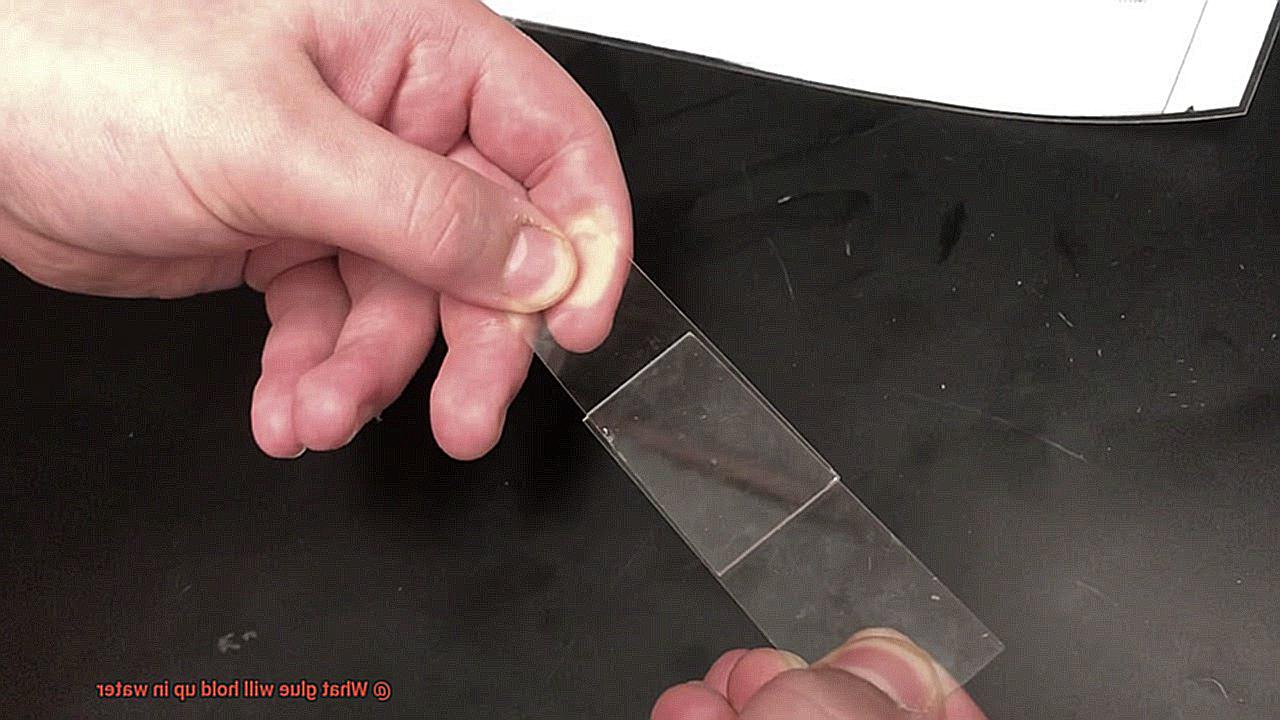
If so, then water-resistant glues might just be the solution to your problem. However, before you start using them, it’s important to understand both their advantages and disadvantages.
Advantages of water-resistant glues:
- Durability: Water-resistant glues are known for their exceptional durability, even when exposed to water. This makes them perfect for outdoor projects like boat building or construction projects that require a strong and long-lasting bond.
- Versatility: Water-resistant glues can be used on various surfaces such as wood, metal, plastic, and ceramics, making them a popular choice for DIY enthusiasts and professionals alike.
- Resistance to moisture: These glues are designed to resist moisture, which means they are perfect for use in humid or wet environments like kitchens and bathrooms.
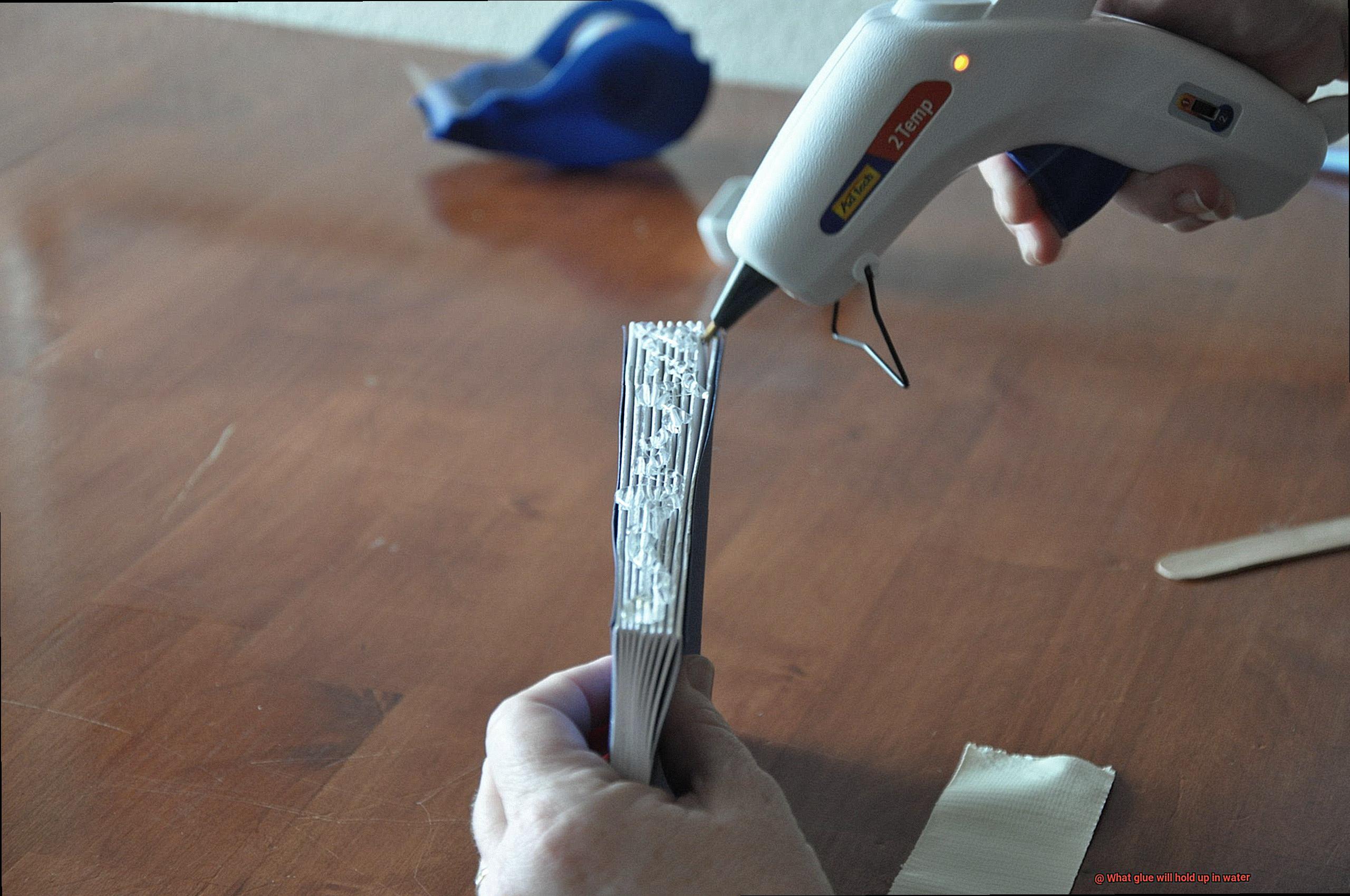
Disadvantages of water-resistant glues:
- Cost: Water-resistant glues are often more expensive than regular adhesives due to their specialized properties. This can make them less accessible to people who are on a budget.
- Toxicity: Some water-resistant glues contain toxic chemicals that can be harmful if ingested or inhaled. It’s crucial to read the label carefully and use proper safety precautions when working with these products.
- Difficulty in removal: Once dried, water-resistant glues can be difficult to remove, making it challenging to make adjustments or repairs to your project once the glue has been applied.
- Also Read: Is Super Glue Waterproof? – Glue Things
Conclusion
In the world of DIY, finding the right glue that can withstand water is crucial. Traditional water-based glues may seem like a convenient option, but they rely on evaporation to create a bond, making them vulnerable to breaking down when exposed to water. Luckily, there are several waterproof glue options available that won’t let you down.
Epoxy and cyanoacrylate (super glue) are two popular choices for their ability to resist water and maintain their bonding strength. Polyurethane glue and silicone adhesive are also reliable options. When selecting a water-resistant glue, consider your project’s specific needs and the level of water exposure the adhesive will face.
Several factors can affect the effectiveness of glue in wet conditions, such as surface preparation, temperature, exposure time, and type of material being bonded. Proper surface preparation and application techniques are essential to ensure that your glue holds up under wet conditions.
While using waterproof glue has its advantages such as durability and versatility, it’s important to note some disadvantages like cost and toxicity. However, understanding these factors will help you make an informed decision about which type of waterproof glue is best suited for your project needs.
In summary, choosing the right waterproof glue for your DIY project can make all the difference in ensuring its longevity.

